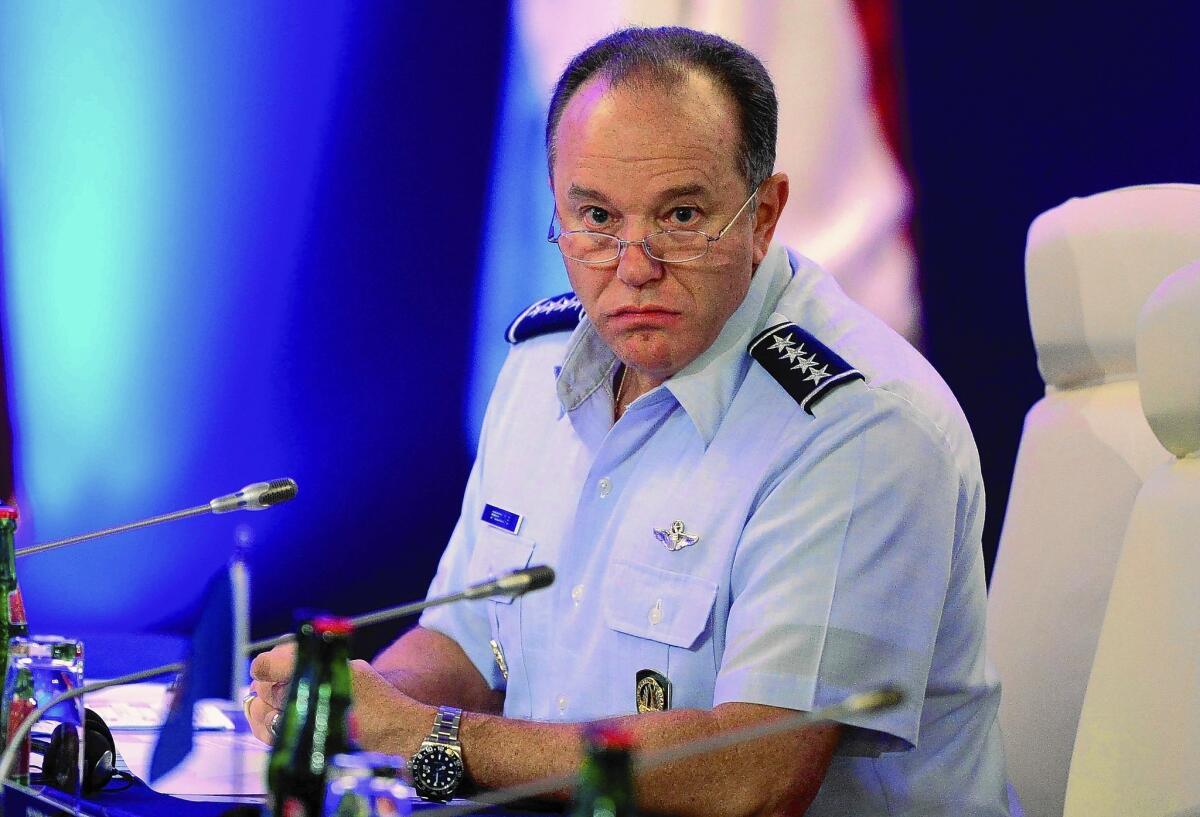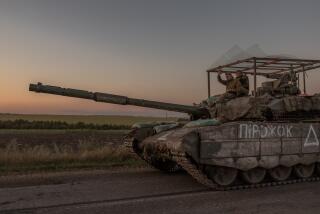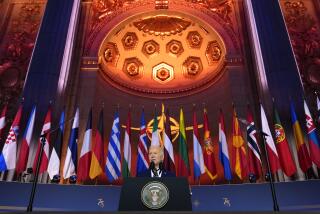Ukraine’s loss of Crimea has NATO examining its core mission

BRUSSELS — Last fall, nearly 6,000 NATO troops, mostly in Eastern Europe and the Baltics, trained to repel an invasion by a fictional country that bore an uncanny resemblance to Russia.
Five months later that scenario no longer seems so remote.
The reality of tens of thousands of Russian troops assembled along Ukraine’s border has forced the North Atlantic Treaty Organization to confront long-deferred issues about its capability — and collective will — to respond to aggressive moves by Moscow.
The recent ouster of Ukraine’s pro-Russian President Viktor Yanukovich and Russia’s belligerent response has the 65-year-old alliance thinking again about its core mission of common defense at a time when its resources, including those of the U.S., are stretched thin.
That reflection has exposed a deep division among NATO’s 28 member nations.
In a visit to Belgium on Wednesday that included a stop at NATO headquarters, President Obama vowed the alliance would “uphold” its commitment to defend its members. In a clear warning to Moscow, he called for stationing more forces in NATO countries “that may feel vulnerable.”
Some experts say that if Moscow began to seriously threaten NATO members, the U.S. would need to at least partially rebuild its military presence in Europe, which once included more than 250,000 troops, hundreds of tanks, fighters jets and other equipment for rapid response against the Soviet army. The number of U.S. troops in Europe now stands at about 70,000 and dropping.
For now, that remains a distant possibility. Obama has all but ruled out direct U.S. military involvement in Ukraine, noting that the country is not a NATO member and therefore outside the alliance’s collective security umbrella.
And though the U.S. and other alliance heavyweights have tried to reassure the Poles and other Eastern Europeans who are NATO members, they have proved reluctant to take more than modest military steps, relying instead on economic sanctions to punish Russia.
By contrast, some of NATO’s newest members in Eastern Europe, who spent decades under Moscow’s control during the Cold War, have appealed for forces to be sent to their territory.
“There is a split,” said retired U.S. Adm. James Stavridis, NATO’s top commander from 2009 to 2013 and now dean of the Fletcher School at Tufts University.
NATO members in Eastern Europe “have a very sharp, painful understanding of Russia’s potential aggression,” while other allies “want to take a very measured approach.”
A failure by NATO to respond now could invite further Russian testing of the alliance’s resolve, Stavridis warned.
Ukraine has asked for weapons and other military aid to bolster it against a possible Russian invasion beyond the Crimean peninsula, which Moscow has annexed.
Pentagon officials have said they are studying that request but have not made any decisions. For now they are looking only at providing “nonlethal” assistance. The U.S. intends to go ahead with a joint NATO-Ukraine military exercise in July in Ukraine near the city of Lviv, in the country’s western region, far from the Russian border, officials said.
After the end of the Cold War, NATO expanded in the 1990s to include Eastern European countries from Estonia to Albania. The move angered Moscow, which ultimately acquiesced when the alliance promised not to station large numbers of troops close to Russia’s borders and delayed a decision on admitting Ukraine and Georgia.
Since then, much of NATO’s energy has gone into the 12-year-old war in Afghanistan, where several European countries have joined the U.S. in combat and economic development operations. That war made it easy to leave divisive — and seemingly theoretical — issues of European defense unresolved.
In the meantime, many NATO members deeply cut their defense spending.
“This is a very precarious situation,” said Barry Pavel, a former official at the Pentagon and National Security Council now at the Atlantic Council, a Washington think tank. “We are a shooting incident away from a civil war in Ukraine, and then we’re in a new security environment.”
Officials in Washington, Berlin and London fear that any move to arm Ukraine’s ill-equipped military or a movement of major forces to Eastern Europe could lead to a further escalation from Russian President Vladimir Putin, who has justified his military moves in Crimea as a response to Western encroachment.
“I think there’s a careful balance that needs to be struck here,” Britain’s defense minister, Philip Hammond, told reporters Wednesday during a visit to Washington for talks on Ukraine. “A more aggressive military response from the West would only be playing into Putin’s hand.”
Few experts believe Putin intends to threaten Poland or other NATO members directly. Russia’s military strength has eroded even more deeply than that of many in the Western alliance, they note.
But a further Russian move against Ukraine could put its troops once again on NATO’s central frontier, stirring even deeper fears that Russia was seeking to reestablish the old Soviet empire.
Gen. Philip Breedlove, the U.S. Air Force officer who commands NATO and all U.S. forces in Europe, warned this week that the Russian military force gathered near the Ukrainian border was “very, very sizable and very, very ready” and could pose a threat to other parts of Eastern Europe.
Those potential trouble spots include a Russian-speaking enclave in eastern Moldova, one of Ukraine’s neighbors, known as Transnistria, where separatist leaders have demanded to join Russia.
“There is absolutely sufficient force postured on the eastern border of Ukraine to run to Transnistria if the decision was made to do that,” Breedlove said, calling the situation “very worrisome.”
Obama indicated Wednesday that the U.S. is urging NATO to consider further military steps, including additional ground exercises and training. Obama also said the alliance should review defense contingency plans and bolster readiness of the NATO Response Force, a 25,000-soldier unit to which each alliance member contributes troops on a rotating basis.
In a meeting with NATO Secretary-General Anders Fogh Rasmussen, Obama also discussed a plan to rotate additional NATO air, naval and ground units through Eastern Europe to ensure a “continuous presence,” deputy national security advisor Ben Rhodes told reporters.
“Both the United States and Europe are going to have to make sure that we are stepping up our game,” Obama said.
Cloud reported from Washington and Hennessey from Brussels.
More to Read
Sign up for Essential California
The most important California stories and recommendations in your inbox every morning.
You may occasionally receive promotional content from the Los Angeles Times.












